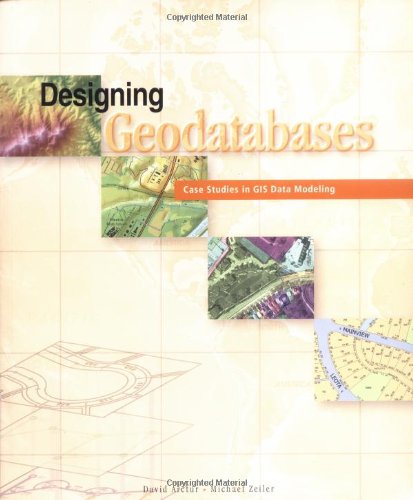- You are here:
- Home »
- GIS Software »
- Designing Geodatabases: Case Studies in GIS Data Modeling
Designing Geodatabases: Case Studies in GIS Data Modeling


This guide to creating a dynamic GIS data model helps database managers design a schema that has comprehensive and descriptive query definitions, a user-friendly cartographic display, and increased performance standards. The five steps for taking a data model through its conceptual, logical, and physical phases, including modeling the user’s view, defining objects and relationships, selecting geographic representations, matching geodatabase elements, and organizing the geodatabase structure are studied in detail. A look at nine decision points that deal with concerns common to all data modeling exercises, such as validating feature geometries, modeling linear networks, managing raster data, and labeling map features help database managers fine-tune their GIS data models. Several design models for a variety of applications are considered including addresses and locations, census units and boundaries, stream and river networks, and topography and the base map.
Product Features
- Used Book in Good Condition
"Click Here!!! to get the best picture, get the best deal, lowest price and more detailed differences and similarities of the product as well as some more important information affecting your purchasing decision."Click Here
Session expired
Please log in again. The login page will open in a new tab. After logging in you can close it and return to this page.

Design ideas and scenarios This book provides a good introduction of steps and principles in designing geodatabases and the importance of information products and identifying thematic layers. The book presents 7 complex models: streams and river networks, census units and boundaries, addresses and locations, parcels and cadastre, surveying federal lands, using raster data, cartography and the base map. For each model they present the features, feature data sets, relationships, and topology rules. Readers working in these 7 areas will probably gain most from the book. I would have also liked simpler examples and more design principles on grouping features into feature data sets. One of the strengths of this book is in stressing the value of topology rules, and feature data sets are needed for topology rules. With a database background, I would have liked fuller exploration of database relationships and normality contrasted with GIS relationship classes, relates, and joins, since data is often…
A must for GIS model design & appraisal 0
0